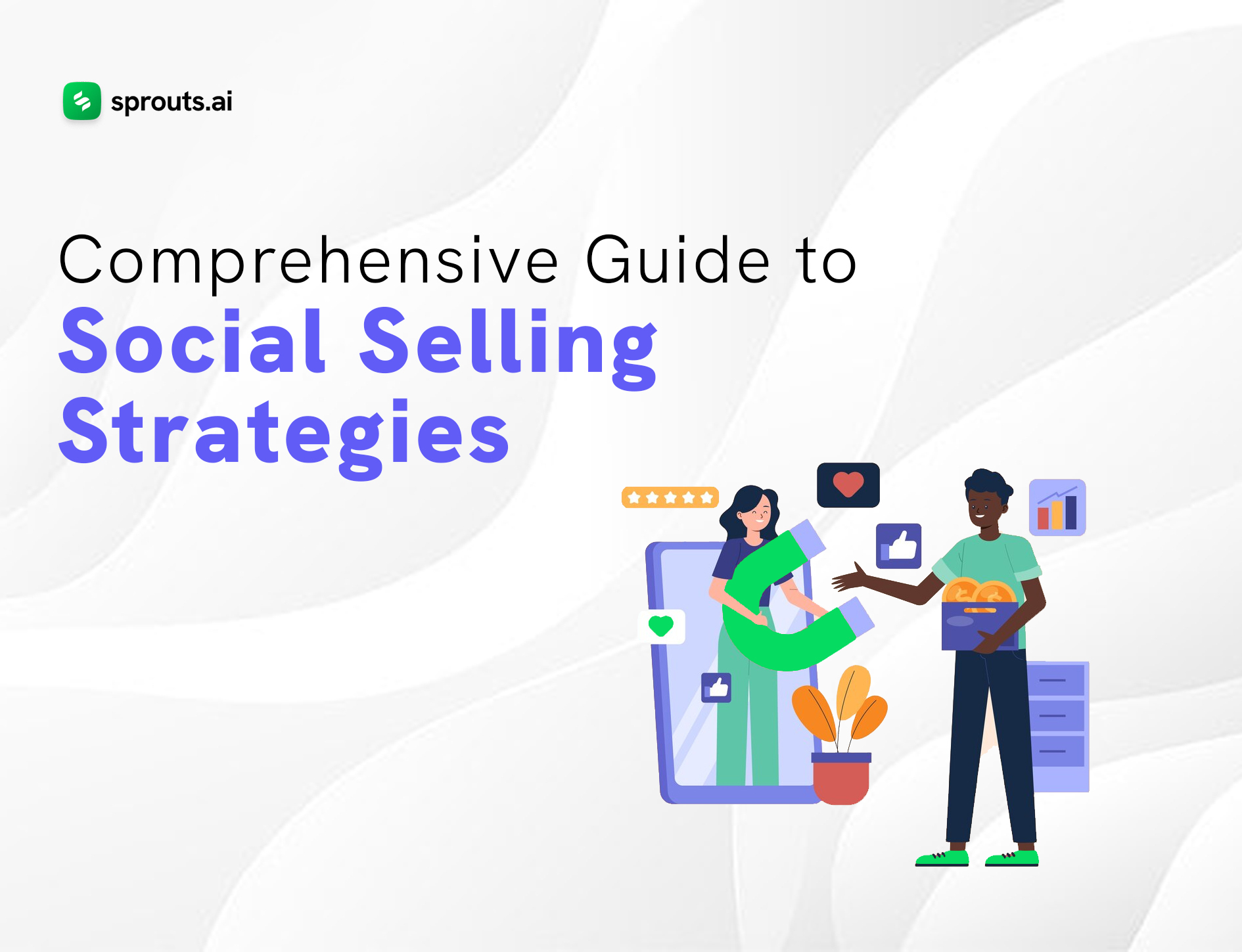Gone are the days of relentless cold calls and impersonal pitches. Today’s sales pros are turning to social media to build relationships, establish trust, and drive sales. But social selling isn’t just about blasting promotional messages across your network. It’s about fostering genuine connections, offering valuable insights, and becoming a trusted resource for your target audience.
This blog explores social selling in detail, equipping you with the strategies and tactics you need to thrive in the digital age. We’ll explore everything from profile optimization and content creation to building relationships and measuring results. Read on to learn more.
Understanding Social Selling
Social selling is the process of using social media platforms to identify, connect with, understand, and nurture sales prospects. Unlike traditional sales tactics that focus solely on pitching products or services, social selling revolves around building meaningful relationships with potential customers. It’s about establishing trust, credibility, and authority within your industry by providing value and engaging with your audience genuinely and authentically.
Key Components of Social Selling
- Profile Optimization: Your social media profiles serve as your digital storefronts. Optimize them to showcase your expertise, personality, and the value you offer. Use professional yet approachable photos, craft compelling bios, and ensure consistency across all platforms.
- Content Creation and Curation: Content is at the heart of social selling. Create and share content that educates, entertains, and inspires your audience. This could include blog posts, videos, infographics, podcasts, and more. Additionally, curate relevant content from other sources to provide additional value to your followers.
- Engagement and Networking: Actively engage with your audience by responding to comments, messages, and mentions promptly. Participate in industry-related discussions, join relevant groups and communities, and network with other professionals in your field. Building genuine connections is key to establishing trust and credibility.
- Prospecting and Lead Generation: Use social media listening tools to identify potential leads and monitor relevant conversations happening within your industry. Look for opportunities to offer assistance, answer questions, and provide solutions to problems. This approach helps position you as a helpful resource and makes it easier to initiate conversations with prospects.
- Relationship Building: Focus on building long-term relationships rather than aiming for immediate sales. Take the time to understand your prospects’ needs, challenges, and goals. Personalize your interactions and offer tailored solutions that address their specific pain points.
- Social Selling Tools and Technologies: Utilize social selling tools and technologies to streamline your efforts and maximize efficiency. These may include CRM software, social media management platforms, analytics tools, and automation software. But always remember that technology should enhance human connections, not replace them.
Effective Social Selling Strategies
- Know Your Audience: Take the time to research and understand your target audience. What are their demographics, interests, pain points, and buying behaviors? Tailor your content and messaging to resonate with their needs and preferences.
- Choose the Right Platforms: Not all social media platforms are created equal. Identify which platforms your target audience frequents the most and focus your efforts there. Whether it’s LinkedIn for B2B sales, Instagram for visual content, or Twitter for real-time engagement, choose the platforms that align with your business objectives.
- Provide Value First: Instead of immediately pitching your products or services, focus on providing value to your audience. Share insightful industry tips, offer free resources, and engage in conversations that demonstrate your expertise and willingness to help.
- Build Thought Leadership: Position yourself as a thought leader in your industry by consistently sharing valuable insights, opinions, and expertise. Publish articles, contribute to discussions, and showcase your knowledge through webinars, podcasts, or speaking engagements.
- Harness the Power of Visual Content: Visual content such as images, videos, and infographics tends to resonate more with audiences than text alone. Incorporate compelling visual elements into your social media posts to capture attention and convey your message effectively.
- Measure and Analyze Results: Track the performance of your social selling efforts using key metrics such as engagement, reach, leads generated, and conversion rates. Use this data to identify what’s working well and what areas need improvement, then adjust your strategies accordingly.
- Stay Authentic and Genuine: Authenticity is crucial in social selling. Be genuine in your interactions, avoid using overly salesy language, and prioritize building real connections with your audience. People are more likely to trust and do business with those they perceive as authentic and trustworthy.
Social selling has become an indispensable tool for businesses looking to connect with customers and drive sales. By understanding the fundamentals of social selling and implementing effective strategies, you can establish a strong online presence, build meaningful relationships, and ultimately, achieve your sales goals. Remember to prioritize providing value, engaging authentically, and continuously adapting your approach to meet the evolving needs of your audience. With the right mindset and strategies in place, social selling can be a powerful driver of business success.

